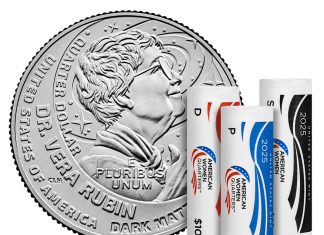
US weekly jobless claims filings fell under the pivotal 400,000 mark according to this morning’s Labor Department report. The drop in claims (by 34,000) brought the overall figure to the 388,000 level (the lowest since July) for the week ending on December 25. Although economists polled by Bloomberg had anticipated a filings figure closer to 415,000 based on the previous report hovering near 420,000, the data release did not appear to bolster the US dollar.
The US currency fell (by 0.26) to 79.50 on the trade-weighted index. This morning’s news reports alluded to the fact that the slippage in the greenback was mainly due to…improving economic conditions, as global investors seek higher yields. In other words, what’s good for the US must be even better for emerging markets.
Against this background, the precious metals complex bounced around within narrow price ranges and exhibited signs of some indecision (make that final book-squaring and fewer and fewer players on duty) during the first hour of trading, following a couple of sessions of outsized gains. Gold meandered between $1,405 and $1,410 while silver continued to edge closer to the $30.75 level as more hedge fund money was being thrown at it.
Platinum declined only marginally, trading near $1,755, while palladium maintained the recently achieved $800 mark on the offer side of spot dealings. Rhodium edged higher by $10 to trade at $2,360 per troy ounce. Crude oil fell 60+ cents to the $90.50 value zone ahead of the American Petroleum Institute’s inventory report due at 11 am this morning.
Perhaps the preoccupation with yield-chasing manifest among funds as we approach the 2010 finish line was intense enough to overlook the fact that a slowdown is underway in China. The country’s manufacturing activity fell to a three-month low as the central bank is grappling with uncomfortably high levels of inflation and has set out on a rate tightening course.
That said, the December contraction still comes at the tail-end of a fourth quarter which revealed the strongest manufacturing activity since the beginning of the year. "Slowdown" — when it comes to China can (still, but perhaps not for long) be interpreted…differently. The world’s second largest economy, its currency, and its central bank’s policies, bear close watching in the Year of the Rabbit coming up.
Something else that bears watching equally closely is the good old US dollar. The percentage of dollars in the global reserve system appears to have not undergone much of a change, despite its morticians’ calls for a sure-to-come demise in 2010. In fact, the greenback fell 2.5% during this year (compared to a loss of 10% in 2009) but managed to retain its dominant (62.1%) position in the global system. Bond fund giant PIMCO said yesterday that the US currency will retain its reserve status in 2011 as the alternatives offered by China or Europe are unsuitable due to immature bond markets.
PIMCO is not alone in betting on the odds that the American currency will remain the core one when it comes to global reserves. The lack of credible alternatives ensures such an outcome, despite concerns about the US deficits and monetary/economic policies that some have interpreted as deliberately intended to weaken the greenback.
"There is, I submit, no plausible [replacement] candidate" suggests Princeton University Professor Peter B. Kenen in a recent paper of his. Professor Kenen — as PIMCO — argues that neither the euro nor the yuan constitute valid substitutes to the dollar at this juncture.
What’s more, China would stand to sustain untold amounts of damage to its $2.5 trillion in reserves, if, in fact, one existing alternative (SDRs) would be resorted to and/or if the US dollar suddenly lost major value. The world holds some $9 trillion in reserve assets and the growth of such reserves has pushed them to record levels in 2010. Can the percentage held in dollar decline? Why, sure. It has declined from 72% back in 2001. Will it still remain the dominant currency when it comes to global trade and reserves? Apparently so, and much to the chagrin of certain…bettors.
Other ‘bettors’ are sweating profusely, these days. The other day we alluded to certain scenarios under which the "alternative-investment industry" (hedge funds) comes crashing down in the not too distant future. Such sea-change was to be considered against a change in the interest rate environment. But, wait, there’s more. There is also the legal/regulatory environment. A recent arrest in California should start some thinking. Or, shuddering, as the case may be.
Forbes.com reports that "the latest arrest brings even further unwelcome attention to the hedge fund industry, which has managed to avoid regulatory oversight for decades. The FBI raided the offices of three hedge funds last month as part of its ongoing probe into insider trading. The investigation has also shed light on the so-called expert-networking firms that allegedly conspired to provide confidential information to clients that included hedge funds".
PS. One regular reader queried the colorful gold lease rate charts seen on Kitco and the little spike he spotted therein, recently. Please, do note that there is…NOTHING to note in the gold lease rate charts. Period. No mystery, no intrigue, no gold ‘shortage’ and no sinister dealings at play. Lease rates continue at near and under zero as the general interest rate environment and the lack of borrowing by primary users remain anemic. Also note that it costs real money to vault, insure, and inventory the stuff. Ergo, the -0.25% lease rate for short-term (all but the one-year) borrowings.
Until tomorrow,
Jon Nadler
Senior Analyst
Kitco Metals Inc.
North America
www.kitco.com and www.kitco.cn
Blog: http://www.kitco.com/ind/index.html#nadler
Article:
The Nosferatu Dollar










